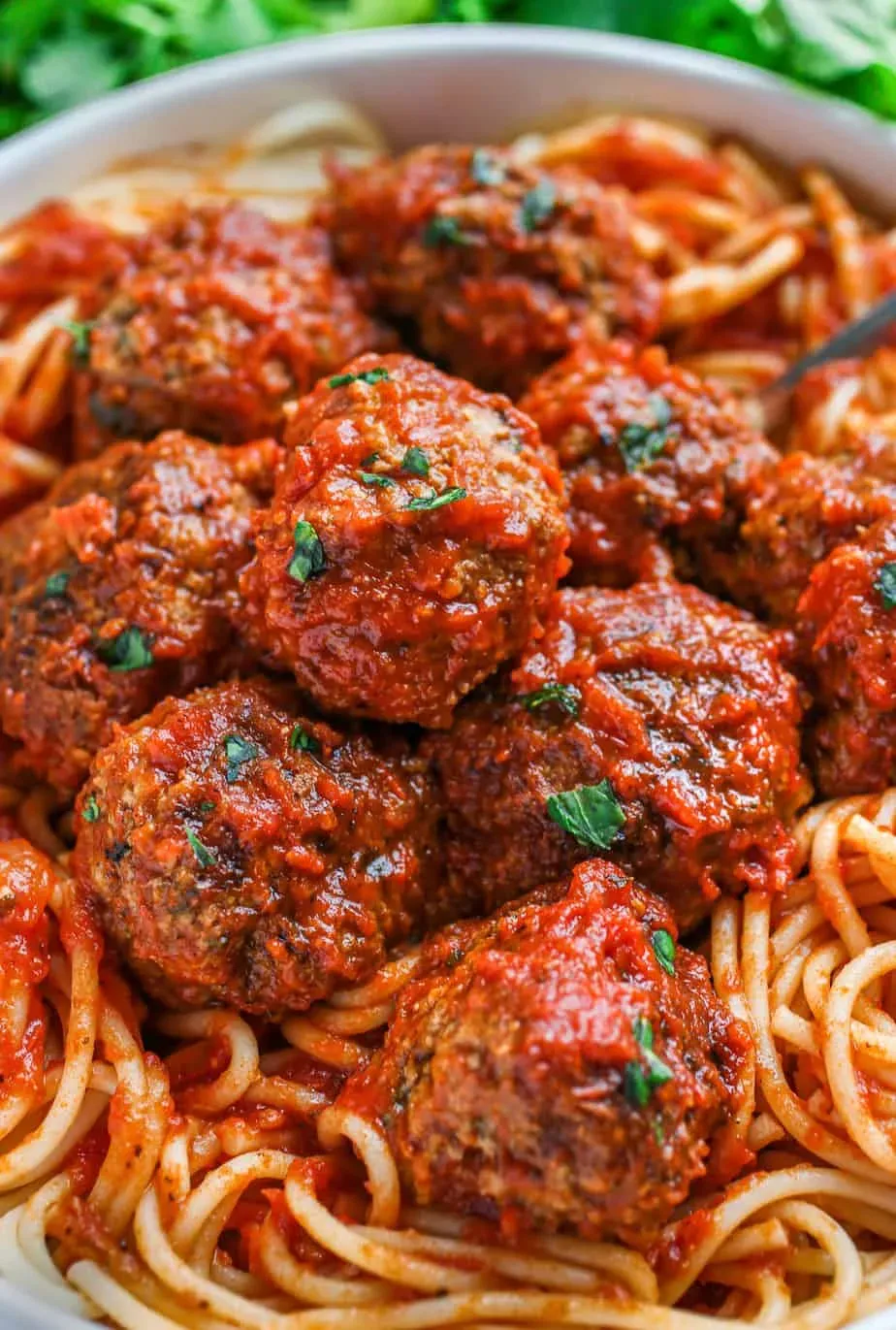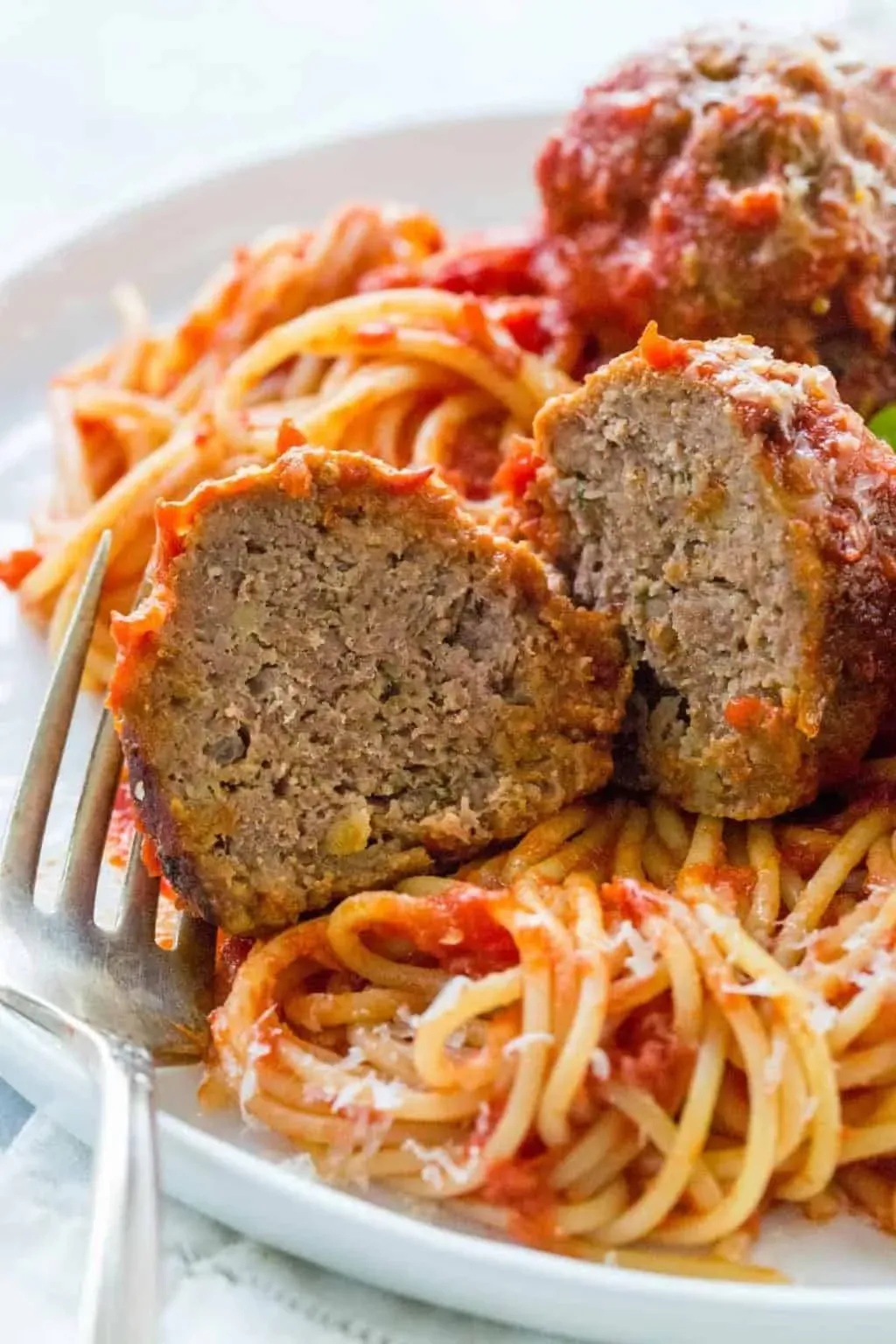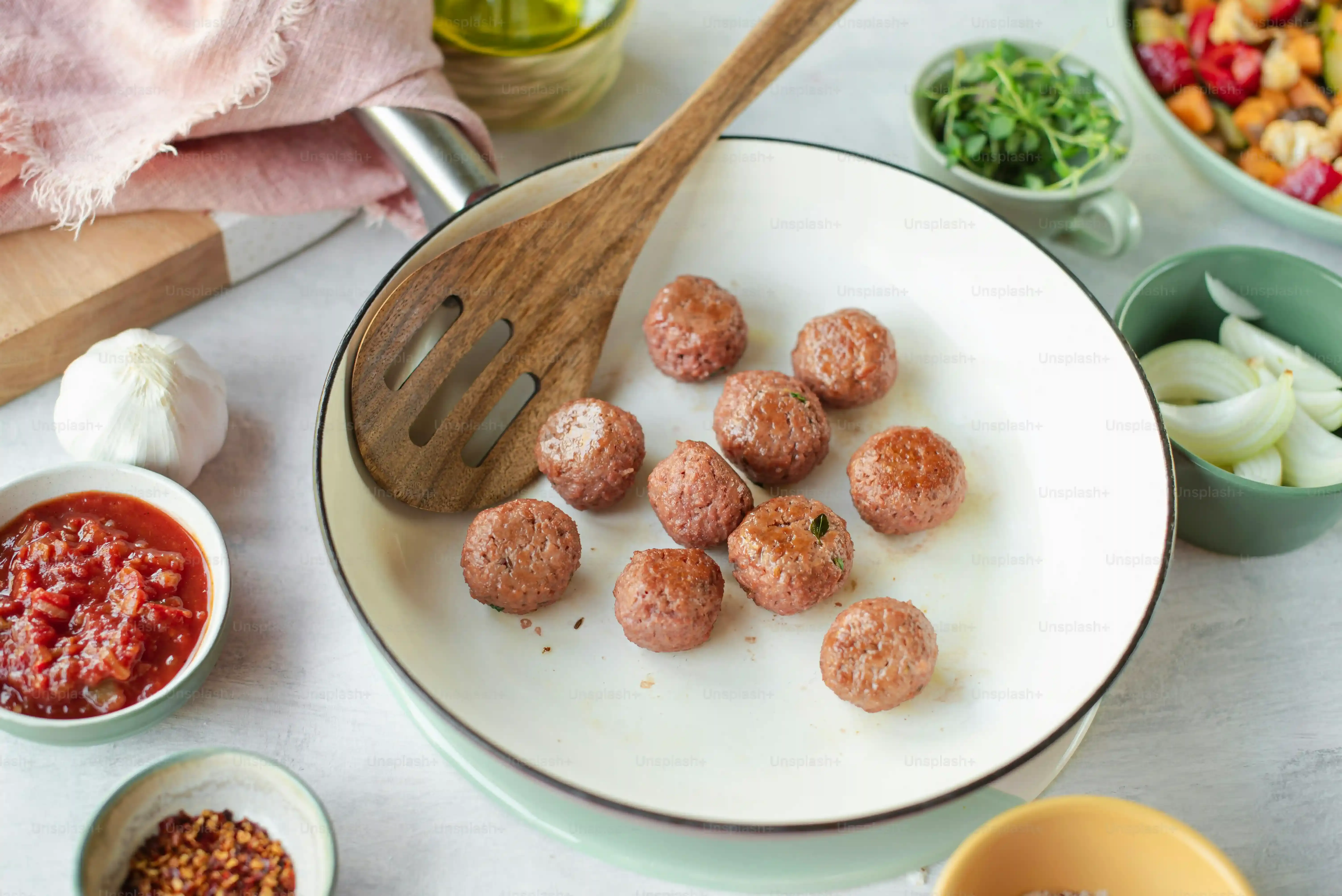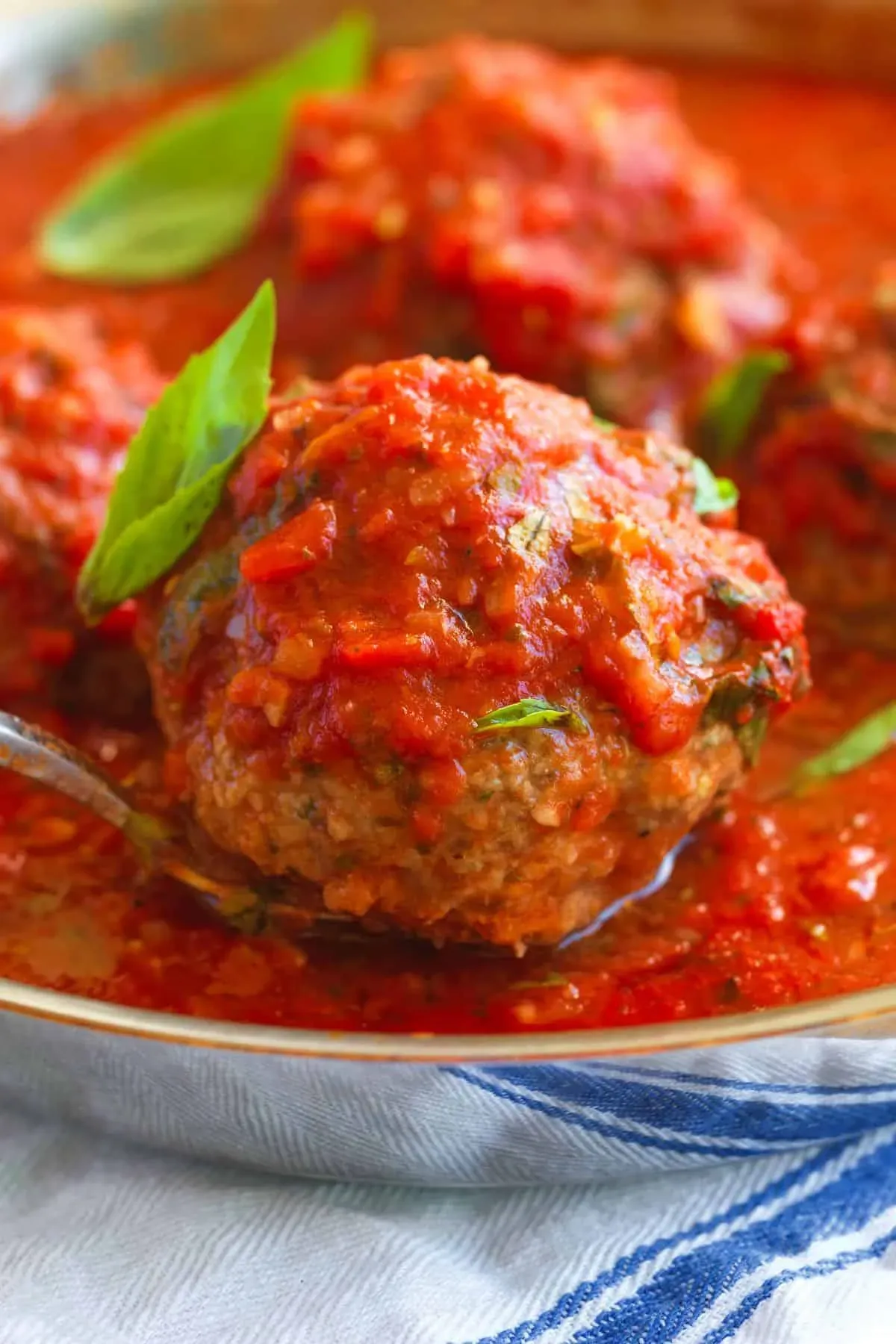Table of Contents
Let's be honest, finding that perfect, tender, melt-in-your-mouth meatball can feel like searching for a four-leaf clover in a pasta factory. Too often you get something dense, dry, or just... bland. But what if I told you the search is over? What if there was a method, a combination of ingredients, that consistently delivers the best recipe italian meatballs you've ever made at home? Forget those hockey pucks drowning in sauce. We're talking about meatballs so flavorful and juicy, they might just steal the show from the spaghetti. We're going to dive into the nitty-gritty of what makes a meatball truly exceptional, from the right blend of meats to the secret ingredient that ensures tenderness every single time. Get ready to unlock the techniques and tips that will make your kitchen the go-to spot for the best recipe italian meatballs, impressing everyone who pulls up a chair.
Why Meat Mix Matters for the Best Recipe Italian Meatballs

Why Meat Mix Matters for the Best Recipe Italian Meatballs
Fat is Your Friend, Seriously
Look, if you want dry, sad little meat rocks, go ahead and use that super lean ground turkey. But if you're aiming for the best recipe italian meatballs, the kind that practically melt in your mouth, you need fat. Fat equals moisture and flavor. When those little pockets of fat render down as the meatballs cook, they keep everything tender and juicy. Trying to make a meatball with 95% lean beef is like trying to build a house without nails – it just won't hold up the way you want it to.
Think of it as insurance. That fat percentage isn't just a number on the package; it's a promise of a more forgiving, flavorful result. It binds things together without making them tough and delivers that rich taste you expect from a classic Italian meatball.
The Classic Combination: Beef and Pork Power
For generations, the secret handshake for the best recipe italian meatballs has involved mixing beef and pork. Why? Because they bring different things to the party. Ground beef, especially chuck, gives you that deep, savory flavor base and a good amount of fat. Ground pork adds tenderness, a slightly different kind of richness, and helps keep the texture light. Using just one or the other often results in a less complex flavor and potentially a tougher texture.
My nonna, bless her soul, swore by a 50/50 mix. She'd say, "The beef gives it backbone, the pork gives it soul." And honestly? She wasn't wrong. This blend hits the sweet spot between flavor, moisture, and tenderness, which is exactly what you want when crafting the best recipe italian meatballs.
Why the Beef/Pork Mix Wins:
- Beef Chuck: Rich flavor, good fat content for moisture.
- Ground Pork: Adds tenderness and complexity, prevents dryness.
- Together: Creates a balanced flavor and superior texture.
What Happens When You Skimp on Fat or Mix?
Alright, let's talk consequences. Use meat that's too lean, and you end up with meatballs that are dense and dry, requiring a swimming pool of sauce just to make them edible. Use only one type of meat, say just beef, and you might miss out on the subtle tenderness and flavor nuances the pork brings. It's like trying to play a symphony with just one instrument. You get sound, sure, but not the full, rich experience.
Getting the meat mix right is foundational. It sets the stage for everything else you add. You can have the perfect breadcrumbs and seasoning, but if your meat is wrong, your shot at the best recipe italian meatballs is already compromised. It's the first step you absolutely cannot afford to mess up.
The Magic Ingredient: Breadcrumbs and Milk (Not Just Breadcrumbs)

The Magic Ingredient: Breadcrumbs and Milk (Not Just Breadcrumbs)
Forget Dry Crumbs, Embrace the Soak
you've got your meat mix sorted. Now, let's talk about what separates a truly great meatball from a merely okay one. It's the breadcrumbs. But not just any breadcrumbs, and certainly not those dry, dusty things from a cardboard box. We're talking fresh bread, torn into pieces, or even better, pulsed in a food processor until you have fluffy crumbs. Why fresh? Because fresh bread has moisture. And when you introduce that moisture to your meat mixture, it works wonders. It acts as a binder, yes, but more importantly, it creates little pockets of softness within the meatball. Dry crumbs just absorb moisture from the meat itself, leading to a tougher result. Think of it as giving your meatballs a little internal hydration system.
The Milk Bath Secret to Tenderness
Here's the real game-changer, the step that elevates your meatballs from good to the best recipe italian meatballs territory: soaking those fresh breadcrumbs in milk. This isn't some old wive's tale; it's culinary science. The milk softens the breadcrumbs completely, turning them into a paste-like consistency. When you add this soggy bread-milk mixture to your meat, it distributes moisture incredibly effectively. It prevents the meat proteins from getting too tight and tough as they cook. My Aunt Clara used to say, "Give the bread a little bath, and the meatballs will sing." And she was right. This simple step is the secret weapon for achieving that signature tender, yielding texture that defines a truly great meatball.
Why Milk-Soaked Bread is Essential:
- Adds significant moisture directly into the mix.
- Prevents meat from becoming tough during cooking.
- Creates a lighter, more tender texture.
- Acts as a superior binder compared to dry crumbs.
Assembling Your Best Recipe Italian Meatballs: The HowTo
Bringing It All Together: The Wet Stuff
you've got your killer meat blend and your beautifully soaked breadcrumbs. Now it's time for the party. In a big bowl, combine your beef and pork mix with that milk-soaked bread. Squeeze out any *excess* milk from the bread first – you want it moist, not swimming. Next up, the binders and flavor boosters. Crack in your egg (usually one large one is plenty for a standard batch). Add generous amounts of grated Parmesan or Pecorino cheese. This isn't just for flavor; the cheese helps bind everything together and adds a salty kick. My Zia Maria would add a splash of white wine here too, claiming it made them "extra festive." I tried it once; it was fine, but the milk-soaked bread is the real MVP.
Folding in Flavor: Herbs, Garlic, and Gentle Hands
Once the wet ingredients are in, it's time for the aromatics and seasoning. Finely minced garlic is non-negotiable. Fresh parsley, chopped fine, adds brightness and color. Some folks like a pinch of red pepper flakes for a little warmth. Salt and pepper are crucial – don't be shy, meat needs seasoning. Now, the critical part: mixing. Use your hands. It's the best way to feel the mixture and ensure everything is evenly distributed. But here's the catch: mix *gently*. Overmixing develops the meat proteins, leading to tough meatballs. You're not kneading dough. You're just bringing the ingredients together until they're combined. Think of it like folding, not stirring vigorously. A few gentle turns are all it takes to get started on your best recipe italian meatballs.
Key Ingredients for Assembly:
- Milk-soaked fresh breadcrumbs
- Large egg
- Grated Parmesan or Pecorino cheese
- Finely minced garlic
- Fresh chopped parsley
- Salt and pepper
- Optional: Red pepper flakes, splash of white wine
Cooking Methods That Deliver the Best Recipe Italian Meatballs

Cooking Methods That Deliver the Best Recipe Italian Meatballs
Stovetop Simmer vs. Oven Bake: The Great Debate
Alright, you've mixed your meat, soaked your bread, and rolled your beautiful, plump meatballs. Now comes the moment of truth: how do you cook these bad boys to perfection? There are two main camps: the stovetop simmer-in-sauce crew and the oven-bakers. Both can get you to delicious results, but they offer slightly different textures and flavors, and frankly, one might be better suited depending on your end goal for the best recipe italian meatballs. Simmering them directly in your sauce infuses them with flavor from the get-go and keeps them incredibly moist, almost melting into the sauce. Baking gives them a nice exterior crust before they hit the sauce, adding another layer of texture and flavor, and honestly, it's less messy if you're making a huge batch.
Storing and Serving Your Best Recipe Italian Meatballs

Storing and Serving Your Best Recipe Italian Meatballs
Keeping Your Meatballs Prime
you've made a glorious batch of the best recipe italian meatballs. Maybe you made extra (smart move). Now, how do you keep them tasting amazing for later? The good news is, these meatballs are freezer champions. You can freeze them cooked or uncooked. If freezing cooked, let them cool completely, then pack them in airtight containers or freezer bags. They'll last a couple of months easily. Freezing them uncooked is also an option; just place them on a baking sheet lined with parchment paper, freeze until solid, then transfer to a freezer bag. This prevents them from sticking together. Thaw them in the fridge overnight before cooking or reheating. For storing in the fridge, cooked meatballs in sauce will last 3-4 days. Plain cooked meatballs last about the same.
Your Journey to the Best Recipe Italian Meatballs Ends Here
So there you have it. No more dry, sad meatballs. By paying attention to the blend of meats, giving those breadcrumbs the spa treatment they deserve with milk, and using a cooking method that respects their tender nature, you're well on your way. It's not rocket science, but it does require a little care. Follow these steps, and you'll consistently produce the best recipe italian meatballs that are juicy, flavorful, and frankly, pretty darn impressive. Your dinner guests (or just you, standing over the pot) will thank you.